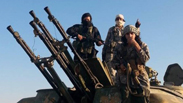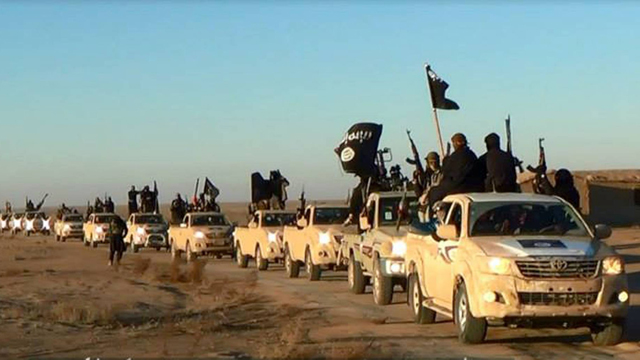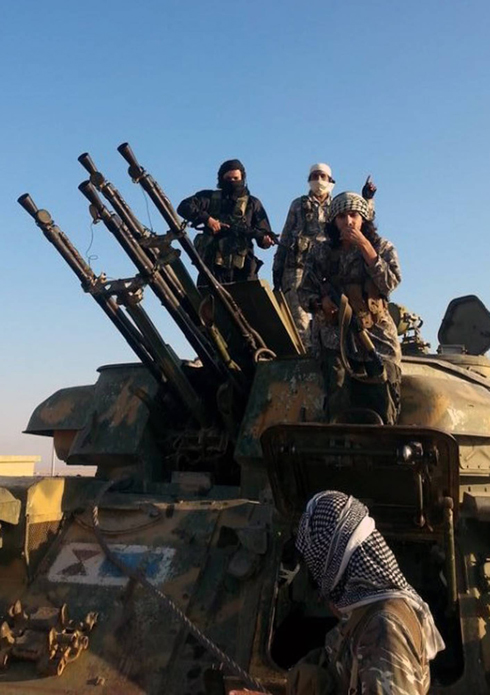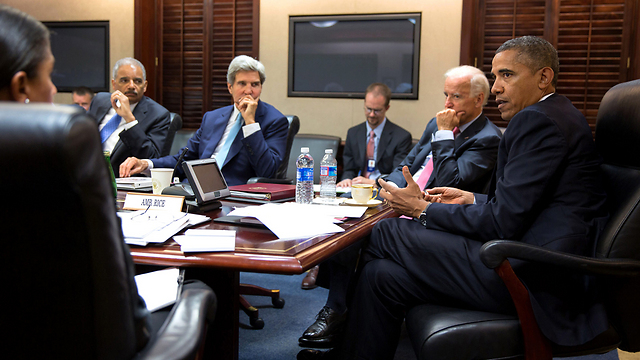
Islamic State militants in Raqaa
צילום:AP
Report: US special forces were 72 hours behind ISIS' captives
Islamic State militants moved hostages mere days before a Delta force rescue operation, which failed due to insufficient intelligence, according to Wall Street Journal.
WASHINGTON – The Islamic State transferred its captives, including journalists Steven Sotloff and James Foley, 72 hours before US Delta Forces landed at an eastern Syrian prison to rescue them, according to a Wall Street Journal report.
The Saturday report said the rescue attempt failed because of insufficient intelligence – the prison was desolate by the time the special forces arrived. US sources did not rule out that an Islamic country may have informed ISIS of the operation, according to the Wall Street Journal.
On July 3, under cover of night, a few dozen Delta force troops – one of the most elite military units in the world – at an oil storage facility in eastern Syria, near the city of Raqaa. The operation was launched that night because of the exceptionally weak moon light.
The elite soldiers had trained for weeks at their base in North Carolina, with the permission of US President Barack Obama. The operation was modeled on the mission to execute Osama Bin Laden in Pakistan in 2011, among other previously successful operations.
According to the report, the plan was to neutralize the guards, find the makeshift prison, and rescue the hostages which had been held for several months. The plan was presented to Obama and Secretary of Defense Chuck Hagel on July 1.
An unusually large force was deployed in the scenario the troops were met with heavy resistance. The operation was to have last 20 minutes.
Instead, after neutralizing a few armed men, the Delta force scanned the entire compound, finding only evidence of the captives' presence. The US troops were forced to leave empty-handed after about an hour.
The Islamic State's adherence to strict operational security complicated the American tracking effort of the captors and their captives. The US primarily relied on satellite footage and field agents – leading to a lack of primary intelligence.
The Pentagon asked the White House to authorize surveillance flights above Syria before the operation. But launching UAVs above their heads increased the likelihood that the Islamic State would be tipped off to the rescue attempt.
The intelligence the US did hold focused on a temporary prison between storage tanks, drilling towers, and other structures in the Syrian desert. The soldiers were prepared for the possibility that the buildings were booby-trapped or they would be met with a large force of guards – the only scenario they didn't foresee was that the captives would be gone.
President Obama took a much greater risk with this operation than he did with the successful attempt on bin Laden, who was residing in territory where the US military operated.
Obama needed to make a quick decision based on partial intelligence – with the captives' lives hanging in the balance. Officials defended the decision, with one senior military source saying the intelligence was far from perfect. But they added that the chances of the captives' survival were low regardless, and a raid provided the best option.
After Foley was beheaded, the failed operation was exposed and Obama authorized the use of UAVs and U2 surveillance planes above Syria in order to gather intelligence on ISIS sites and potentially track other captives held by the group.













